A day ahead of the Tuesday night announcement for the 2015 Standard Bank Young Artists of the Year winners, I ask Athi-Patra Ruga how he feels about taking the performance artist prize. “You do know that this information is embargoed until the next day, right?” he warns, alerting me of an email about the rules from the award organisers. He runs me through them briefly, before imparting his thoughts on taking the prestigious award “so early on in my career”.
“This prize is a big part of the cultural landscape of the country,” he tells me. “One that a young boy from East London dreamt to be part of and is in total awe and honour of getting it.”
Other 2015 Standard Bank Young Artists of the Year winners:
- Luyanda Sibiya for Dance
- Nduduzo Makhathini for Jazz
- Kemang wa Lehulere for Visual Art
- Musa Ngqunqwana for Music
- Art Christiaan Olwagen for Theatre
As the Cape Town-based multidisciplinary artist shares his joys, the start of our phone chat reminded me that Ruga is hardly ever the star of his own show. But his genius is there, above the layers of latex, paint and electric-coloured fishnet stockings often worn during his performances. Our conversation took me back to a talk he gave at the Design Indaba this year, in which he says that “the greatest choreographer of my works is the costume”. And just like the festival of radiant party balloons that covered the artist as he strutted down Grahamstown’s streets at the National Arts Festival in 2012 (as part of his ongoing White Women of Azania series) or the following year along Johannesburg’s inner-city roads, Ruga allows his creations to take the fore.
From performance pieces to tapestries and video art, Ruga’s creations have always told the necessary stories of sexuality, race and even his ideal world, as well as various topical issues birthed pre- and post-1994 in South Africa.
“What I love doing with my performance art is always challenging the challenges we’re faced as performance artists. We have space issues [to deal with],” he says over the phone. “Whereby one can’t perform in certain places because they are reserved for someone else. So I love going into public spaces and being in the face of that power and speaking truth to that power.”
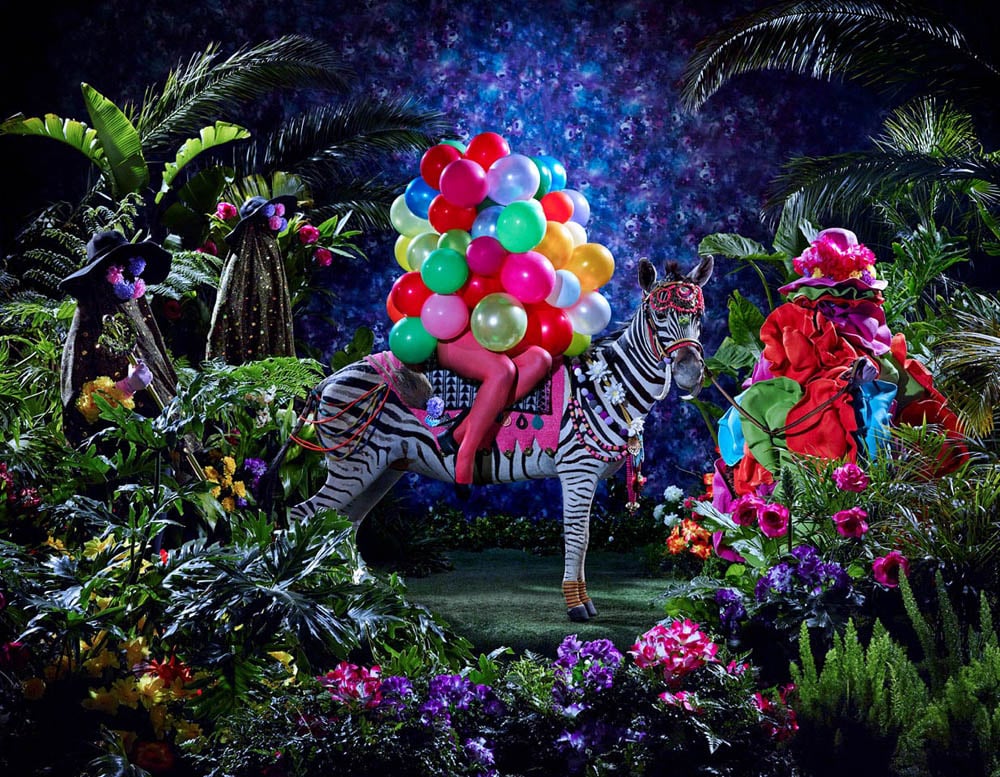
Having predicted Ruga’s win ahead of the announcement, the 2014 Standard Bank Young Artists of the Year (SBYAY) award-winner for performance art, Donna Kukama, says, “He has – like myself – been active and consistent for a while, both on the local and international circuit. This award can be a moment of local recognition that is meaningful to one’s career. It also opens up one’s work to new local audiences.”
So as Ruga is inducted into this field of SBYAY winners that include the likes of Kukama and Anthea Moys (2013), he also forms part of the country’s rich troupe of performance artists such as Robin Rhode, MJ Turpin, Steven Cohen and Mohau Modisakeng. We shine a spotlight on some of the other young performance artists, who, though they haven’t yet won a SBYAY award, are currently making waves in South Africa.
Our six significant young performance artists:
1. Igshaan Adams
It was during a residency in Basel, Switzerland, that artist Igshaan Adams says he was confronted with himself. “I spent weeks on end by myself, not having any contact with humans besides Skype,” Adams says in a 2013 discussion with curator Clare Butcher while in Amsterdam.
It’s in these moments of isolation that people seek spirituality and religion, says the Bonteheuwel-born installation and performance artist. And when you view his artwork, you will certainly be confronted by both religious elements and the artist’s discovery of self. For Bismillah – in which his father, Amien Adams, wraps and cleanses his son’s body in preparation for burial – at this year’s National Arts Festival in Grahamstown, Adams focuses on issues of identity as a gay man brought up Muslim in a Christian home.
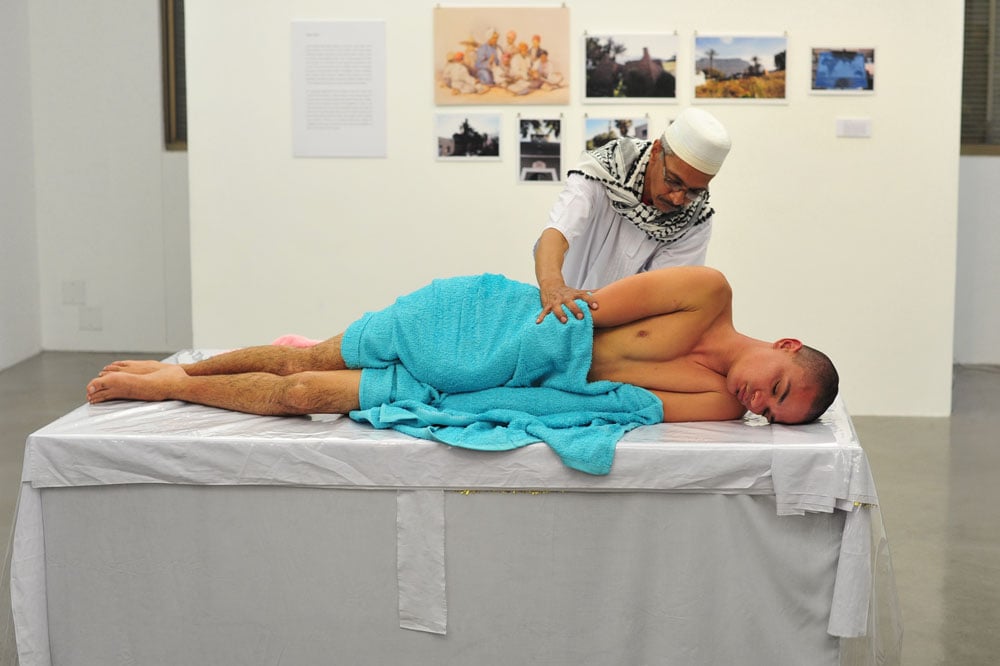
“At birth I was classified as Cape coloured … not white but at least not black … My father was born Muslim, my mother was born Christian,” he says in a video filmed in Switzerland this year. But having grown up in a world of in-betweens, the Ruth Prowse School of Art student’s installations, quilts and performance pieces have their own strong identity.
2. Carla Fonseca
At the onset of Johannesburg’s winter this year, performance artist Carla Fonseca sat in a gallery corner, naked, to make a statement on the high rape statistics in South Africa. Draped in white paint and seated on a school desk, it was hard not to single out her performance at Kalashnikovv Gallery’s large group exhibition in May titled Death of the Old.
According to the University of Cape Town graduate, the piece, titled Do Not Reply to This SMS, “is a metaphor for how I believe rape reports and statistics are dealt with in police departments across South Africa. The long going, ever escalating rape epidemic is not taken seriously enough.”
More recently, and again in winter (but this time in the northern hemisphere), Fonseca’s pop-up exhibition in Berlin titled Hold Your Tongue hauntingly focuses on gender structures and rape in society. “I use bodies as my medium to drive my concepts,” says the Mozambican-South African artist, who is also known for her theatre work, such as Sent, in which she performs alongside the show’s co-creator, Phumzile Sitole.
3. Sifiso Seleme
Clad in a green-hooded cloak and with arms spread out like a priest blessing his Sunday congregation, the performance artist held court at a set of robots on Empire Road in Jo’burg in 2013 to pray for Nelson Mandela a week after the former president’s death.
But he hadn’t planned to be on the busy intersection where Jan Smuts Avenue meets Empire, according to a video filming the performance art piece. “I came here to the Nelson Mandela Bridge to honour our hero Tata Mandela … but unfortunately I couldn’t do it here because of the security.”
So as he recited his prayer for Madiba, whom many were mourning, he simultaneously raised awareness about the public’s access to public space. The Soweto-based artist, who has a background in dance and theatre, says there’s an artistic side to his activism, and he deals with topics ranging from xenophobia to Gauteng’s e-tolls. Part of the Mail & Guardian’s 200 Young South Africans in 2013, Selema also protested public healthcare by walking from Chris Hani Baragwanath Hospital in Soweto to the Union Buildings in Pretoria.
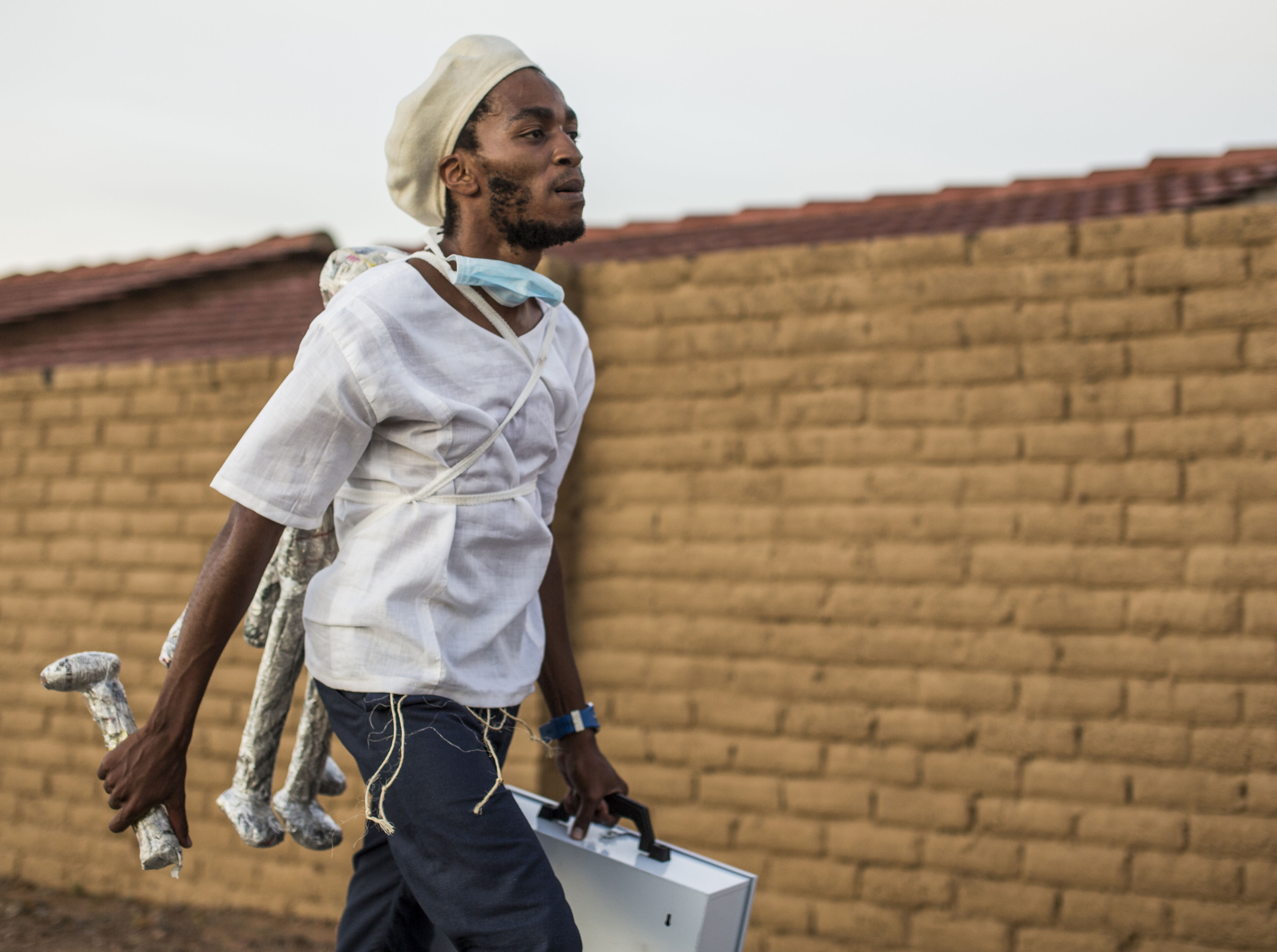
(Photo: Madelene Cronje, Mail & Guardian)
4. Kieron Jina
Long brown limbs, curvaceous silhouettes and muscular, ripped torsos got near-naked at the Wits Arts Museum in August to make visible the “invisible male sexworker”. Performance artists, this year’s Miss Gay Jozi, drag artists, a world-champion bodybuilder, contemporary dancers and physical theatre students did more than take over the gallery space, they spilled onto a Braamfontein street too as part of Werk It!
Among the crowd was Kieron Jina, constantly moving and changing outfits but always in command. This showcase, choreographed by the Jo’burg-based Jina, attempts to interrogate male sex workers within the context of “the rise of oppressive policies and homophobic attitudes across the continent”.
“I have been doing research on male sex workers for the past two and a half years,” he says about his work, which unpacks social taboos and gender constructs. Besides his performance art, the Wits master’s graduate works as a lecturer and is currently participating in two residency programmes in Berlin and South Korea, and is also part of performance art ensemble Stash the Suitcase Collective.
5. Gavin Krastin
“Coming from a body-based discipline such as performance and choreography … I do like playing off nudity,” says performance artist Gavin Krastin in a video on his work #omnomnom. The performance piece, which debuted at this year’s National Arts Festival, was a live art piece during which audiences could eat off the artist.
“The intention was to manipulate or encourage a sense of objectification of the body.” As some people feasted from the award-winning artist’s body and others engaged with him, the Rhodes University graduate’s work has addressed the lavishness of political and celebrated figures in society.
Pointing to wealthy businessperson Kenny Kunene eating sushi off women in the past, Krastin says #omnomnom also looks at the exploitation of the body and “rape culture”.
6. Albert Silindokuhle Ibokwe Khoza
Hordes of people packed tightly into the open-air parking lot space of the Goodman Gallery as the Jo’burg Art Fair kicked off. Hundreds of onlookers came to see the city-based band and art ensemble The Brother Moves On and street artists Mr Fuzzy Slipperz and Nolan Oswald Dennis, but what audiences got was so much more. Or rather, one more entity: performance artist Albert Silindokuhle Ibokwe Khoza.
As the The Brother Moves On performed alongside the two artists spraypainting a backdrop beneath a cloudless sky, Khoza motioned effortlessly between the two stages, drawing the audience’s gaze along with him. The Wits University student performed his piece Influences of a Closet Chant, which, according to the gallery’s website, “explores the journey and challenges of otherness … It explores the complexity of cultural connotations and denotations, societal prescription and expectation”.
Khoza – who in a 2012 Wits Vuvuzela article talks about having the calling – delves into spirituality, tradition and sexuality in his performance work.
Athi-Patra Ruga’s top two young artists:
“People who use their bodies and perform quite well are Bogosi Sekhukhuni and Kemang Wa Lehurele,” says Ruga.
7. Bogosi Sekhukhuni
“Sekhukhuni does amazing videos that are very sophisticated for someone who is quite young and does not have a solo show yet,” Ruga says of the 23-year-old performance and video artist, who was one of the M&G’s Top 200 Young South Africans in 2013.
“I always look forward to his work.” Sekhukhuni was recently announced as the winner of the 2014 [Working Title] award, a prize awarded annually by the Goodman Gallery, which aims to recognise and support “young artists and assisting them in developing their work”, according to the gallery.
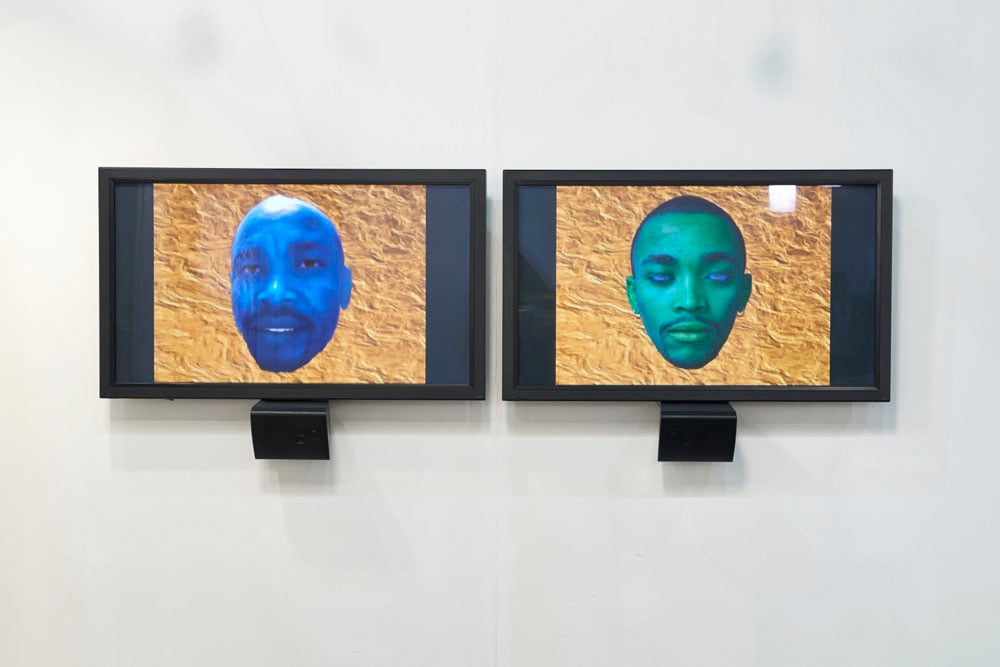
The substantial prize is not confined to any one specific exhibition, and the artists may use the money awarded to further their careers in any way they deem fit. Last year’s winner was Gerald Machona.
8. Gerald Machona
Speaking of the Zimbabwean-born artist, whose work has dealt with xenophobia and Zimbabwe’s economic crisis, Ruga says “Gerald Machona’s politics and the use of his material is amazing. I like how he integrates the two to make everything perform.” Machona, a University of Cape Town and Rhodes University graduate, has also interrogated ideas of isolation and foreignness in his installations and performances.
In a recent interview with the M&G, Machona says: “We are all foreign to someone, somewhere, at some point in our lifetime, and my work tries to connect with that idea”. “With global trends of migration and naturalisation, we are now faced with rapidly diversified notions of collective identity, where traditional concepts such as nationhood are no longer simply about where you are born.”
Donna Kukama’s three significant performance artists:
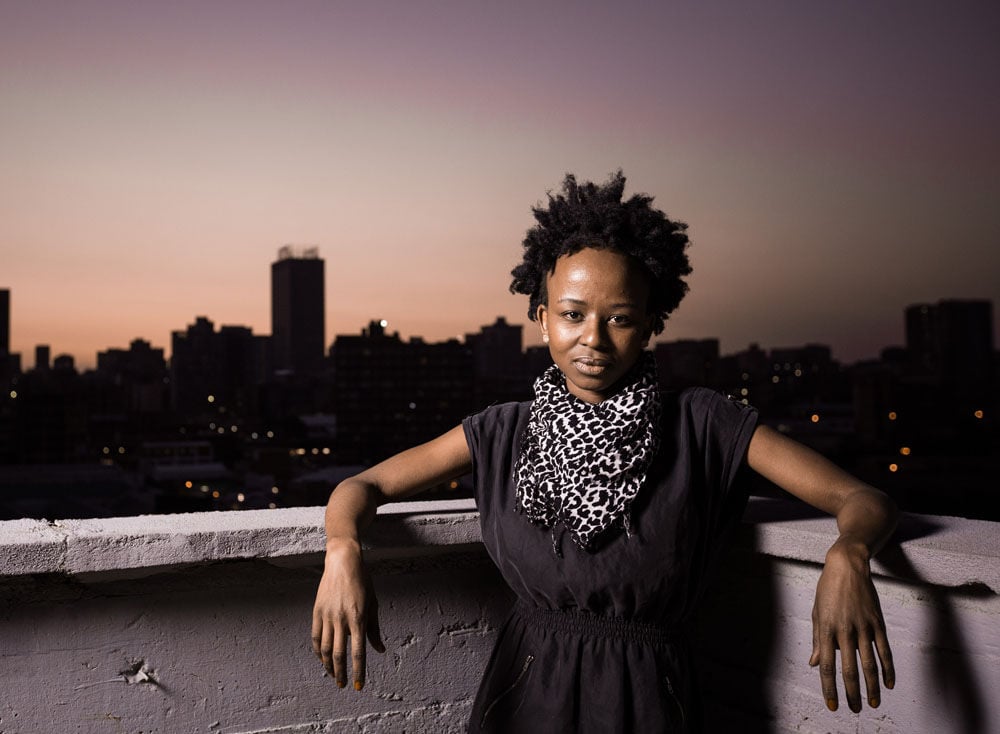
Co-founder of the Jo’burg-based Non-Non Collective and winner of the 2014 Standard Bank Young Artist of the Year award for performance art, Kukama lists her three top young performance artists who have not won the SBYAY prize.
9. The Brother Moves On
“Although known as musicians, The Brother Moves On will always come across as a performance art collective in my eyes.”
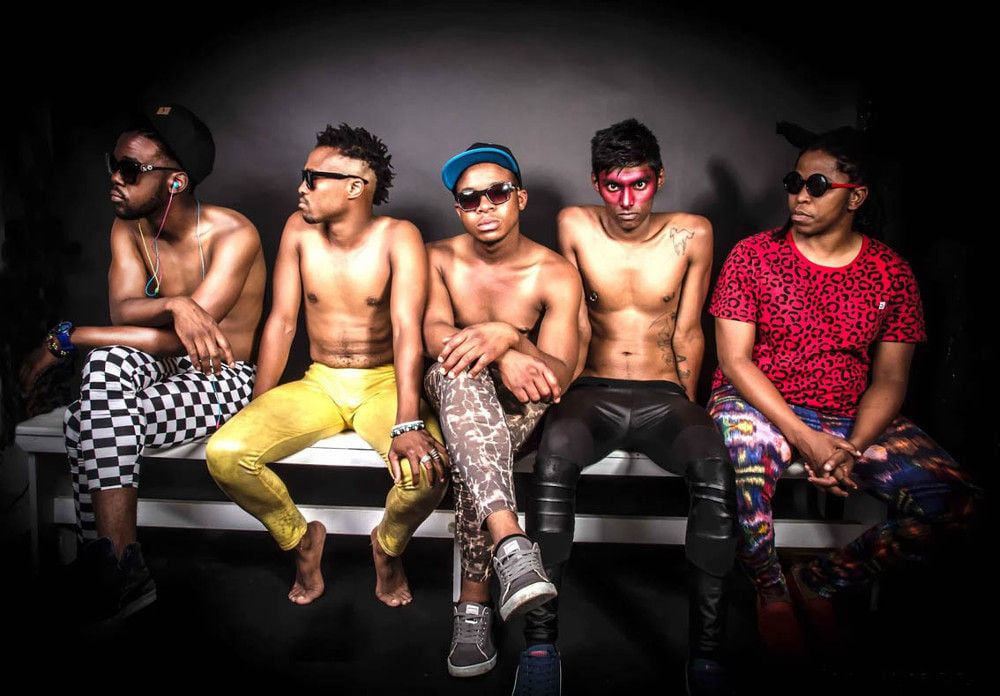
(Photo: Paul Botes, M&G)
“The way in which they present themselves goes far beyond music and entertainment. The universes that they open up through the use of sound and costume cleverly blurs the music, theatre and performance art genres in ways that are not only visually captivating, but are also inspiring as ideas that speak to my own lived experiences. These guys open up other worlds, and manage to take us along. My ‘favourite’ spot goes to them, for sure!”
10. Dineo Seshee Bopape
“Although she works primarily in video, Seshee Bopape has presented some of my favourite performance-based work in the past. I remember her piece, The Performance will commence in 20 minutes, thank you … , which was a sign that was placed in what I believe was her studio at the time. The performance never started, and every visitor would follow the instruction to wait for 20 minutes (most waiting or longer). At that point, I was mostly aware of her videos and installations, and I immediately fell in love with her performance-based work after hearing of that piece.”
11. Kemang wa Lehulere
“Wa Lehulere, who like myself also works across different mediums, has a language in performance that is quite unique. The performance he presented during his solo show in Stevenson Johannesburg titled Some Deleted Scenes Too was one of my all-time favourites.
“His work has an ability to present text, performance, objects and drawings as all “cues” to an ongoing script that is continuously erased and rewritten, but never repeated in an exact manner.”